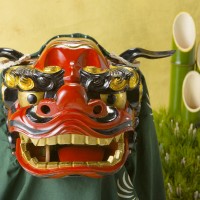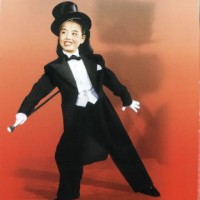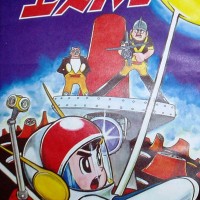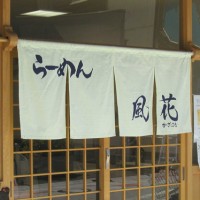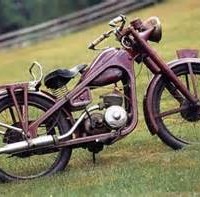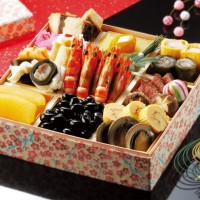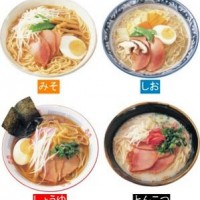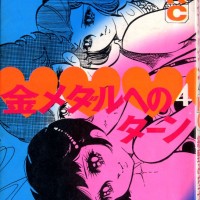blog
Tuesday: Japanese Proverb
12/02/2015 blog
Makanu Tane-wa Haenu (Nothing comes of nothing./No pains, no gains./ No mill, no meal./One must sow before one can reap.) (Does this happen without sawing the seeds?) Og Mandino says, “Act or ye will be acted upon.” You must realize that plans are only dreams without action. “The world will always determing your worth by the deeds you do. Who can measure your talents by the thoughts you have or the emotions you feel? “ Do you happen to know the person who always talks about his “fantastic plans” or “great ideas” for hours, which makes you bored? In a year or so, did he ever take actions and implement …
Monday: One Point Japanese Clinic
12/01/2015 blog
Mo Ikutsu Neruto Oshogatsu (https://youtu.be/1H4yuXPQX60) Is it too early to mention “New Year”? Yeah, yeah… “New Year” is not so important as Christmas in US. I know that! Nowadays, the Japanese celebrate (without knowing what to celebrate!?) Christmas too. However, the importance of “New Year” in Japan is incomparable to Christmas! “Mo Ikutsu Neruto Oshogatsu” means “How many more days do I have to count before the New Year comes?” When December starts, the Japanese are getting really + really busy in preparing for the celebration of the new year, which lasts at least for the first 7 days. As you may know it, the Japanese work a lot. Housewives …
Friday: Japanese Hero
11/30/2015 blog
Misora Hibari (https://en.wikipedia.org/wiki/Hibari_Misora) (Right After Her Big Hit: https://youtu.be/GorIRRmeFkg) Nobody in Japan doubts Misora Hibari (https://en.wikipedia.org/wiki/Hibari_Misora) WAS a genius child singer. When she grew up, she was called “Queen of Japanese Show Business.” As a movie star, she played a major role in more than 200 movies. In the meantime, the number of her recordings was 1,500 with 517 her original songs. She died at the age of 52 in 1989. (At Her Funeral in 1989) As you may know it, geniuses are lonely. Misora Hibari was lonely. Her only comrade was her own mother when she was young and was her adopted son after her mother/manager passed away. Her son, whom …
Thursday: Japanese Food
11/27/2015 blog
Oden (= Japanese Hotchpotch/Hodgepodge) (Homemade Oden) (Commercial Oden) This is one of the most popular seasonal foods in Japan called “Oden.” If you make all the ingredients from the scratch, it takes you so long to prepare Oden. But nowadays the Japanese go to grocery stores to get a pack of Oden ingredients and put them in the soup stock, which flavor is different from one another depending on where you live. Basically, you are supposed to put some Japanese mustard on them and enjoy! (Serving Suggestion of Daikon Radish – Simple!?) Since Japanese Seven Eleven (https://en.wikipedia.org/wiki/7-Eleven) started to sell Oden in 1979, Oden has become even more popular as …
Wednesday: Japanese Manga
11/27/2015 blog
Kosoku Espaa (Wikipedia lists it only in Japanese and Chinese!) (Two Cartoonists in Charge of TV Scripts) (TV Version: https://youtu.be/RS20LGupKA8) “Kosoku Espaa” was created as a company mascot of Toshiba (https://en.wikipedia.org/wiki/Toshiba). The TV programs sponsored by Toshiba aired this famous song (https://youtu.be/pFqNnEGIDG8), which became, due to millions of its repetitions, very popular. All Toshiba stores in Japan carried the portrait of “Koosoku Espaa” on their front shutter doors like these: OLYMPUS DIGITAL CAMERA (Isn’t it interesting?) (Big “Kosoku Espaa” Mannequin at the Store Front) That’s it! “Kosoku Espaa” was a company mascot of Toshiba indeed! The TV version, which started in 1967, grabbed the attention of so many people, including …
Tuesday: Japanese Proverb
11/25/2015 blog
Noren-ni Udeoshi (= be useless like beating the air; be waste of time) (Noren #1) (Noren #2) (Noren #3) (Noren #4) You will often see Noren (https://en.wikipedia.org/wiki/Noren) at the entrance of shops and stores in Japan. Usually you push Noren and enter the store. Back in old days, there were no entrance doors at stores and shops. They were totally open to the public during their business hours. All those Noren separated inside from outside. Since Noren is made of some fabric (most likely of cotton), anybody (even toddlers if they reach Noren) can split it with his hand and enter the shop. So, the action “pushing (“Oshi”) Noren by hand (“Ude”)” …
Monday: One Point Japanese Clinic
11/24/2015 blog
Conjugation of Adjectives <-i Adjectives vs -na Adjectives> (Sofia Loren at 72 years old) You know the name of Sofia Loren (https://en.wikipedia.org/wiki/Sophia_Loren), an Italian actress, don’t you? Look at the picture above! She was 72 at that time of shooting for the famous calendar called Pilleli. Sofia Loren-wa Utsukushii desu. (= Sofia Loren IS beautiful.) <present tense> (Sofia in her 30’s) Sofia started her career in her teen’s. As Wikipedia (source: tourboimagehost.com) describes, “Sophia Loren is one of the most popular style icons of the 1960’s.” Her beauty, no doubt, culminated in her 30’s as you see it in the picture above. Sofia Loren-wa Utsukushikatta (desu). (= Sofia Loren WAS …
Friday: Japanese Hero
11/23/2015 blog
Honda Soichiro (https://en.wikipedia.org/wiki/Soichiro_Honda) (Honda Prototype) (Honda Car Prototype) Honda Soichiro (1906 – 1991) is the founder of Honda Motor Co., Ltd. He made Honda, as all of you know it, such a giant motor company not only in Japan, but also in the world, all by himself! What do you think why I said, “all by himself”? He was an extremely ingenious artisan. Besides, he was born in Meiji era (1868 – 1912). It is said in Japan that Meiji men are very stubborn (https://en.wikipedia.org/wiki/Meiji_period). Honda totally ran one-man business. He was so strict with employees who didn’t do their best that he hit them with ash trays or wrenches when he …
Thursday: Japanese Food
11/20/2015 blog
Kazunoko (Herrings’ Eggs) (Kazunoko in Osechi Ryori/Special New Year Celebration Menu) Kazunoko is herrings’ eggs. That is it. However, there was someone in Japanese history that named this simple “eggs” Kazunoko and that made people feel Kazunoko is SPECIAL!! (This is how Kazunoko is sold) (Typical Preparation) Kazunoko has a special taste and texture when you bite in your mouth. But that someone made it special dish for New Year (celebration). As a result, Osechi Ryori (Traditional Japanese New Year Celebration Meal) ALWAYS includes Kazunoko. (Gorgeous Expamples of Osechi Ryori) Traditionally, housewives used to prepare Osechi Ryori on New Year’s Eve. The rest of the family look forward to having it …
Wednesday: Japanese Manga
11/19/2015 blog
Atakku No.1/Attack No.1 (https://en.wikipedia.org/wiki/Attack_No._1) (TV Version: https://youtu.be/kNUYWEIosfE) “If you don’t remember this anime, you are not Japanese.” This TV anime was that popular in late 60’s to early 70’s in Japan. “Sain-wa V,” which showed up earlier in one of my Wednesday’s Blogs, and “Atakku No.1” were big competitions on TV in those days, dealing with volleyball. Originally, this was started by Chikako Urano, a cartoonist, in a girls’ magazine called “Margaret” and became very popular. Contrary to “Sain-wa V,” this manga stayed as manga/animation on TV. (Comics Version) While a grown-up woman was the main character in “Sain-wa V,” Ayuhara Kozue, the heroine, started out as a middle school student …
Tuesday: Japanese Proverb
11/18/2015 blog
Tonbi-ni Aburaage-wo Sarawareru (= have one’s share filched [taken] by another) (Black Kite* from Wikipedia) Tonbi (= Black Kite: https://en.wikipedia.org/wiki/Black_kite) are such wild birds that they usually don’t come near humans. However, they attack humans and take food away from humans’ hands once they get used to humans. When you hold aburaage (= Fried Bean Curd/Fried Tofu) in your hand, chances are you may be attacked by Tonbi and have your aburaage (delicacy in those days) taken away! (Japanese Aburaage) I have no idea if there was an occasion where a black kite flew to someone to take away the fried tofu he was holding in his hands in the past, but this expression …
Monday: One Point Japanese Clinic
11/17/2015 blog
Watashi-wa Isha-ni Naritai desu. (= I want to be a doctor.) (Surgeon on Duty) [There are special terms to tell you what kind of doctors – specialty – he is, but all kinds of doctors are under the category of “Isha” in Japanese. When people call him, they tend to say, “Tanaka Sensei” or “Suzuki Sensei” though “Sensei” literally means “teachers.”] Let’s learn “OOO-tai” (= hope) pattern in Japanese today. Watashi-wa Isha-ni Naritai desu. (= I want to be a doctor.) <“Naru (=become) + tai (=want to)” pattern> Watashi-wa Kyoto-ni Ikitai desu. (= I want to go to Kyoto.) <“Iku (= go) + tai” pattern> Watashi-wa Soda-ga Nomitai desu. (= …
Friday: Japanese Hero
11/14/2015 blog
Kitanoumi and Taiho (Kitanoumi:https://en.wikipedia.org/wiki/Kitanoumi_Toshimitsu) (Taiho: https://en.wikipedia.org/wiki/Taih%C5%8D_K%C5%8Dki) Speaking of Japanese Sumo Wrestlers, you have wondered who was strongest (and best) in Sumo history in Japan, haven’t you? That is one of the most popular questions non-Japanese have in Japanese Sumo wrestling. It is quite natural that critics have different opinions about the question and usually name several Yokozuna (https://en.wikipedia.org/wiki/Makuuchi#Yokozuna) wrestlers, just to be safe. Kitanoumi and Taiho, however, are never missed out! Unanimously in NATION, they were among the strongest and the best in Japanese Sumo Wrestling. I don’t know Taiho’s days, but every Japanese absolutely believe Taiho is the strongest. His record proves it, too. On the other hand, Kitanoumi ruled the days …
Thursday: Japanese Food
11/13/2015 blog
Ramen/Chuka Soba (https://en.wikipedia.org/wiki/Ramen) (Basic Styles of Ramen in Japan) After getting your work done, you are hurrying home. Or you are hurrying home after you attended your cram school to pass the entrance exam to private schools. You are starving and shivering in cold wind. Then, all of sudden, you spot the light from Ramenya-san (Ramen Restaurant) with that particular aroma, sticking around your nose! Who can resist this aroma drifting from the very Ramen restaurant? NOBODY! You gotta stop by! Usually Ramen restaurants or restaurants which serve Ramen in addition to other Chinese cuisines are NOT so big. Look at this picture! (Probably 500 to 1,000 square feet) (With this Noren/Shop …
Wednesday: Japanese Manga
11/12/2015 blog
Kin Medaru-eno Taan (= Turn for the Gold Medal) (Original Comic Version) (TV Version) Most Japanese remember “Kin Medaru-eno Taan (Turn for the Gold Medal)” as a TV drama rather than as its original comics because this show was one of the first TV shows which used the special effects without computer graphics! The time was early 70’s (1970 – 1971). There was absolutely NO COMPUTER GRAPHICS OR COMPUTER EDITING, but most episodes dealt with the unprecedented swimming skills/techniques which were all played by a thin young lady without any muscle (unlike the Olympic swimmers of all time)!? (Where do you see muscle in her?) (Have you seen any Olympic medalists without muscle like this?) …


